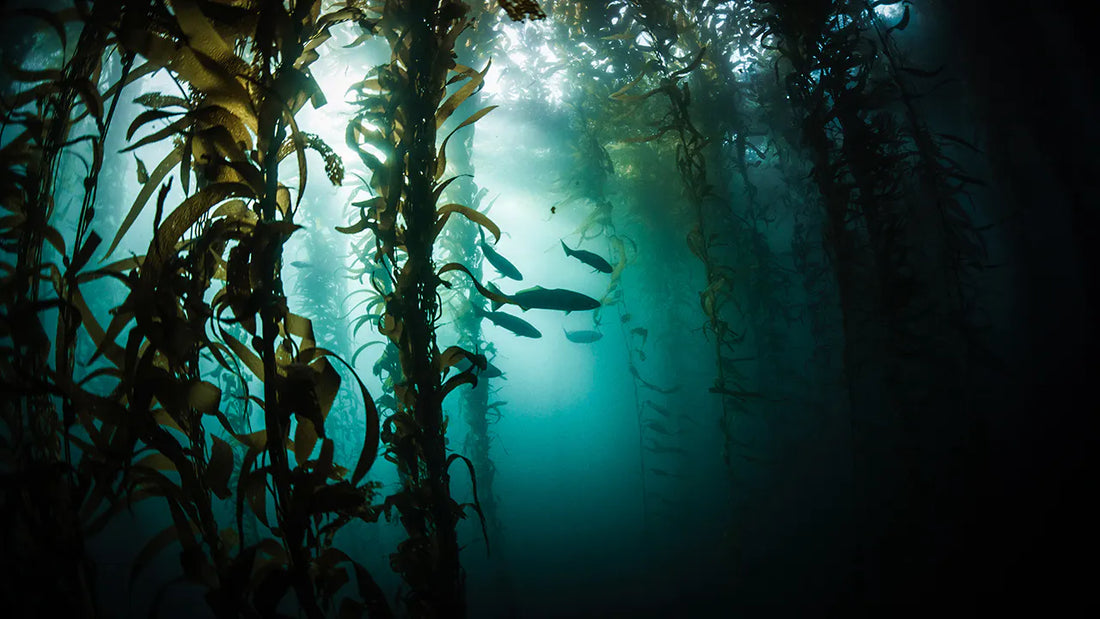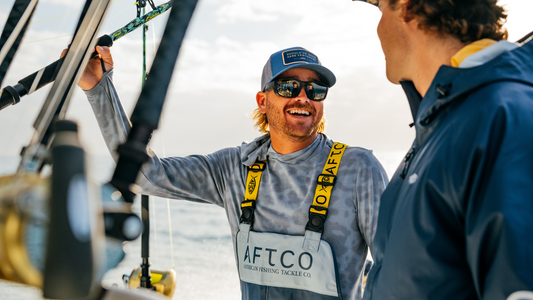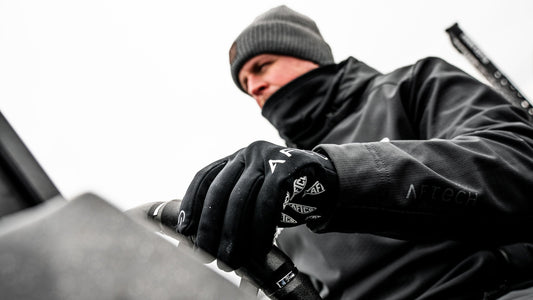
California Must Make White Seabass Hatchery a Priority in Light of New Study
A recent earth-shattering genetics study shows that the California white seabass hatchery program has been far more successful than previously understood. It is now time for the state and its California Department of Fish and Wildlife (CDFW) to course-correct and make this program a priority.
The recent success reported in efforts to restock white seabass off Southern California is the evidence needed for the California Department of Fish and Wildlife (CDFW) to reprioritize the Ocean Resources Enhancement and Hatchery Program (OREHP). A new study has found that the white seabass hatchery has made a far greater positive impact on wild fish population levels than previously reported. The fishing public strongly supports the CDFW hatchery program and contributes an estimated $1.7 million to OREHP annually. However, the state’s history of placing the hatchery low on its priority list has meant that funding to the Carlsbad-based white seabass hatchery has become woefully insufficient. Over the past ten years, the hatchery’s budget has shrunk by an estimated 50 percent in inflation-adjusted terms, all while the demands on the hatchery have increased.
The California Department of Fish and Wildlife is Lacking Support for the Hatchery
The state’s support for this program has been severely lacking. A change in the department’s focus is needed to benefit the marine resource and improve the relationship between the CDFW and the saltwater sportfishing public. A 2017 OREHP Evaluation by California Sea Grant identified the need for additional OREHP measures and funding. A lack of leadership and slow play from the CDFW has led to only baby steps toward funding and implementing the suggestions from the evaluation.
California anglers provide 98% of the CDFW's funding
It’s time for CDFW to better match their priorities with the high priority and focus anglers place on the hatchery program. For example, the CDFW should reinstate the $434,000 yearly Sport Fish Restoration Account (SFRA) funds they previously removed from OREHP. The list of fixes is long and will not take place until there is a newfound commitment to the hatchery. The new genetics study will help drive that commitment.

Genetics Study Showing 30% of Wild Caught Adult Fish to be From the Hatchery
A new study by the Hubbs SeaWorld Research Institute (HSWRI) and the South Carolina Department of Natural Resources (SCDNR) used a genetic-marker methodology for identifying the fish-stocking efforts. When applied to white seabass, it has convincingly shown that previous estimates of Southern California’s OREHP contribution to the once-depleted white seabass population have been greatly underestimated.
Validation of the white seabass hatchery success was shared on April 25, 2022, with a press release from HSWRI and the South Carolina Department of Natural Resources (SCDNR). HSWRI is the entity in charge of the hatchery itself. This genetics-based study shows the hatchery’s contribution to wild stock to be far different than previously understood. The new analysis based on archived tissue samples, showed that 30 percent of adults sampled were hatchery fish (as opposed to less than 1 percent previously estimated by the state). In addition, 46 percent of smaller fish caught in the wild sample surveys of fish less than two years old were hatchery fish. There is a 99.99 percent confidence level that the results are able to distinguish between hatchery and wild fish. This study changes everything with OREHP.
The extraordinary results provide critical information that now drastically alters the understanding of OREHP’s success. WON News highlighted the results in their article hatchery–born white seabass more common in catches than previously thought, research indicates. From Sportfishing Magazine to BD Outdoors, the wide coverage this study has received shows that the recreational fishing community cares deeply for this program. A local news segment between San Diego’s KUSI news and Mark Drawbridge of HSWRI can be found here.

History of the Hatchery & White Seabass Populations in California
White seabass is a prized nearshore saltwater fish. They were abundant in the early 1950s, with yearly sportfishing catches averaging 40,000 fish. Then came the round-haul nets north of Point Conception and the gill nets to the south, resulting in a sharp decline in the white seabass population. By 1970, recreational white seabass catches fell to a few thousand, where they stayed for years. In the late ’70s, Milt Shedd and then graduate student Don Kent started California’s white seabass hatchery program at HSWRI. Their goal was to help Mother Nature recover the depleted white seabass population. By 1983, the HSWRI had learned enough about raising white seabass that legislation was passed to create the state of California’s OREHP – Ocean Resources Enhancement and Hatchery Program. The purpose of OREHP was defined as “conducting a program of basic and applied research on the artificial propagation and distribution of adversely affected marine fish species. ”With the state of California’s strong support to get it off the ground, the white seabass hatchery was established as one of the few stocking programs dedicated to assessing the biological and economic impacts of its releases. It’s the only program of its kind on the West Coast and has successfully released more than 2 million white seabass back into the wild.
Sportfishing Community Support of the Hatchery
Recreational anglers have served as crucial partners of this unique saltwater hatchery effort from the beginning. They worked alongside HSWRI with both Republican and Democrat legislators to pass needed OREHP legislation and secure mitigation funding from the California Coastal Commission for the Carlsbad hatchery. Anglers have provided the brood stock, 98 percent of the program’s funding, more than 100,000 hours of citizen science volunteer time raising and releasing fish at grow-out facilities in their home harbors, and more. Their 50-year involvement with the white seabass hatchery effort is one of our nation’s longest and best examples of angler dedication to rebuilding a depleted fishery.
Disagreement over OREHP Has Created Conflict Between Anglers and CDFW
The CDFW’s actions have shown anglers they are not fully committed to the hatchery and OREHP. In terms of tangible benefits provided to California anglers and the marine fisheries in Southern California, the white seabass hatchery would be at or near the top of our list. Yet the CDFW has been reluctant to fully embrace the program, celebrate its successes, acknowledge its unique and extensive contributions to marine science, provide necessary leadership, defend the program when others falsely criticize it, and most importantly, assign OREHP to a proper level on its list of priorities.
This disagreement over the value and importance of OREHP has created conflict between the sportfishing community and CDFW. It has also impacted the longstanding debate over what real role OREHP was having regarding the white seabass population.

The Hatcheries Long Term Inability to Accurately Identify Legal Size Hatchery Fish in the Wild
In defense of the CDFW, much of their seeming lack of genuine interest and leadership in OREHP is based on the program’s longtime inability to accurately identify legal size fish in the white seabass population. The 2017 OREHP Evaluation showed less than 1 percent of legal-size sea bass had a tag that identified them as hatchery fish. That is a real number. It is understandably a concern of the CDFW and has caused legitimate discussion about just how effective the program was at building the white seabass population. However, the CDFW and others taking that information at face value has prevented them from hearing the recreational fishing community’s information and knowledge as to why the 1 percent might have been inaccurate. We have long believed that there were valid reasons to question the 1 percent conclusion. Our personal experience on the water has shown us vastly increased numbers of white seabass landings in terms of both size and annual catches. We have expressed concern that there may be problems with hatchery fish rejecting the tags. This and more caused anglers to believe more information was needed to truly understand what was happening to the hatchery fish. The entirety of the recreational fishing community’s position on this and other information in the 2017 OREHP Evaluation can be found here in the 2017 CCA CAL Position Paper on the 2017 OREHP Evaluation.
The programs past failure to accurately identify the number of hatchery fish in the wild also opened the door for program detractors to write misleading negative stories about OREHP and cause confusion about the program. An example of an inaccurate summary of OREHP and its 2017 Evaluation with half-truths, misrepresentations, and even blatantly false statements is shown in this 2018 Voice of San Diego article "Carlsbad Fish-Breeding Program Is a Mess, Report Confirms", found here.
2017 OREHP Evaluation, a Call for Funding and More
In 2015, CDFW contracted with California Sea Grant (CASG) to coordinate the first formal, comprehensive review of OREHP’s progress toward achieving its goals. This 250-page report, completed in 2017, was extensive and produced a great deal of valuable and detailed information. Among other things, it pointed out the need for additional funding in many areas.
The evaluation provided two significant conclusions. One related to the science, procedures and ocean safety of the program and the other, as to whether or not the program was significantly increasing the abundance of white seabass in the wild.
1. The first conclusion stated “OREHP has significantly contributed to the scientific understanding of marine enhancement science and met the original intent of the CA State Legislature.”
2. The second conclusion stated “OREHP has not significantly increased the abundance of legal-sized white seabass, resulting in less than one percent contribution to recreational and commercial fisheries catches.”
The HSWRI and SCDNR study has turned the second conclusion on its head. In addition to showing that the conclusion is likely now incorrect, it also opens the door for broader support for OREHP, including increased funding.
In addition to conclusions, the evaluation provided approximately 112 findings (suggestions to improve the program). Many of those findings included the need for additional funding. For example, one of those was that the hatchery needed to develop genetics testing to help better understand what was happening to the hatchery fish. Even without the funding to do so from OREHP, Mark Drawbridge, HSWRI’s aquaculture program leader, quickly engaged with SCDNR to garner their support. Ultimately, the State of South Carolina provided the support needed for this genetics study. As the nation’s leader in research and scientific innovation, California should be embarrassed that we needed to go to South Carolina to secure the necessary funding for the genetic research so critical to our OREHP program.

The CDFW Needs to Redirect Angler Generated Funds back to the Hatchery ASAP
The CDFW has allowed funding to the HSWRI, the contractor where most of the actual OREHP work takes place, to become woefully insufficient. The HSWRI budget has shrunk. It is down by 50 percent in inflation-adjusted terms over the last ten years.
OREHP is high on the priority list of the fishing tackle industry, which generates the Sport Fish Restoration Act (SFRA) excise tax funds for the state. Yet the allocation of recreational fishing excise tax dollars was reallocated by the CDFW from $750,000 to $316,000. While the HSWRI budget was hurting for funds needed to perform even the most basic job functions, like fish care, the CDFW allowed a reserve account to accumulate over $3,000,000! Those funds were only recently discovered by OREHP Advisory Panel (AP) members, who pushed to have them put to work. Was that the result of oversight, or low priority, or lack of real attention to and leadership of the program? Regardless of how we got here, change is needed. The HSWRI has made it clear to both the CDFW and its advisory panel that it can’t continue to do what is asked and required without significant increases in its budget, as outlined in the 2017 Evaluation.
OREHP Must Act to Support Our Fisheries
The sportfishing community has been and continues to be all-in with OREHP. However, we have no additional funding than the current $1,718,445 we will provide this year. Of that, $1,402,445 comes from our white seabass stamp funds and $316,000 from the SFRA excise tax funds. The evaluation took place almost five years ago, when additional funding needs were identified. While some funding progress has been made, most of the OREHP funding needs have not been fully addressed. The recent genetics study alone is enough reason for new thinking and direction for OREHP. CDFW can reinstate the $434,000 SFRA funds they previously removed from OREHP if they choose to do so. They can also reallocate some of our angler license fees not now being used to support OREHP. Those sportfishing funds can come from other programs that the CDFW may consider priorities but the sportfishing community does not. By law, sportfishing funds must be spent on sportfishing issues. Is it not reasonable for the CDFW to spend their sportfishing money on the programs highest on the sportfishing community priority list?
If the CDFW is ultimately unwilling to do the above, it also has the option to become more creative in generating new, not-yet-thought-of funding sources. The sportfishing community is here to support them in that new leadership role. A higher CDFW priority on OREHP will help ensure that the white seabass hatchery program and OREHP can continue to lead the way in California’s support of Mother Nature in her battle to maintain full and healthy fish populations for the next 50 years. It will also contribute to the current California focus on 30x30 and ocean conservation as OREHP provides a tangible opportunity to support marine fish populations.
What You Can Do to Help
Anglers - Support CCA CAL and its many hatchery contributions to the white seabass hatchery program. You can also turn in your seabass heads to the HSWRI. With the ability to now determine hatchery fish via genetics, turning in heads is more important than ever. Finally, if you have a relationship with your local state senator or assembly person, or other elected representative, help them understand why the seabass hatchery is important to you. Sportfishing Industry Organizations and Clubs – Educate your own members and social media contacts and followers about the recent genetics study. Let them know that now is the time for the state of California to provide additional support to OREHP.

Article Author
Bill Shedd served for over 25 years on the OREHP Advisory Panel and as its past chairman. He is also chairman of the board of directors of the CCA California, HSWRI and American Fishing Tackle Company (AFTCO). Learn more about AFTCO’s relationship with HSWRI here.





